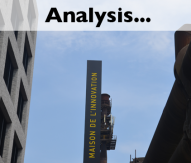
Commission agrees flat rate for indirect costs
The European Commission has published a non-paper outlining plans to reimburse indirect costs incurred under Horizon 2020 with a flat rate.
The EU institution released the report at the recent Competitiveness Council in Brussels. Speaking at the ministerial meeting, Máire Geoghegan-Quinn, Commissioner for Research, Innovation and Science, said further simplification to Horizon 2020 could only be achieved if a flat rate was introduced. She said the Commission “could not support a model that would re-introduce complexity by the back door, by means of a full cost option”.
The paper defines direct costs as those incurred that are ‘necessary’ for the project or incurred ‘during’ the investigation as well as being ‘directly linked to the implementation of the project’. Under current Horizon 2020 proposals, direct costs would be covered by a 100% reimbursement for research and development projects that have yet to cross ‘the valley of death’ and by 70% for closer-to-market initiatives.
The report added that for large infrastructures used in a project, direct costs would include setup, specific maintenance bills and leasing. Operating costs could also be claimed in addition to any personnel costs directly linked to the infrastructure.
The report adds that indirect costs would include building rental, insurance costs, auditing and legal services and HR. All indirect costs are set to be covered by a flat rate of 20% of the direct costs; the Council of the European Union has proposed a rate of 25%.
The Commission says “the differentiation between direct and indirect costs will become a key question for the beneficiaries – and in some cases even decisive for being able to keep similar funding intensities as in FP7”.
The move is likely to anger non-profit Research and Technology Organisations, which have called for a full reimbursement of indirect costs. Under FP7, both direct and indirect costs are currently reimbursed on the basis of actual costs.
The full non-paper can be read here.




